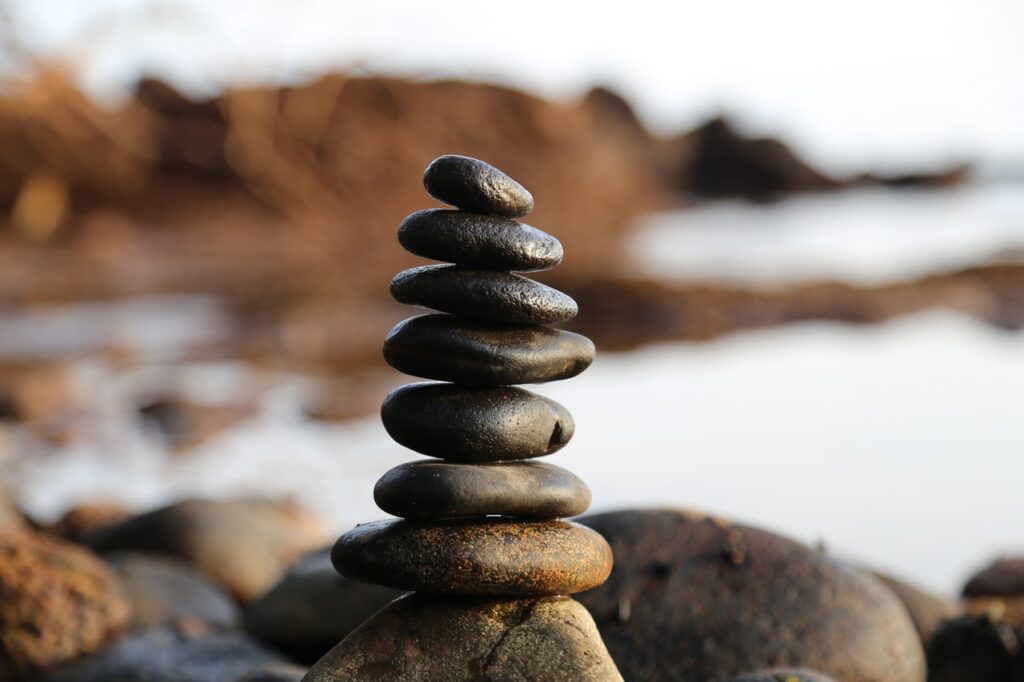As a working mom, I feel a little guilty when I take time for relaxation. But you know what they say… You can’t pour from an empty cup! Most of the time I push aside my stress to take care of work and others, but I’ve recently learned that I’ve been doing myself and my health a disservice!

Did you know that stress actually has negative health effects? An episode here and there isn’t a huge deal, but stress that builds up over time (also known as chronic stress) can wreak havoc on your cardiovascular systems, digestive system, mental health, and even your immunity. That’s because stress elicits a physiological response. Think about it… Your heart may race, your muscles tense, your breath might even get short and shallow. In small moments here and there, these physiological changes help us respond to stress, i.e. it’s the ‘fight or flight’ feeling. But our bodies aren’t built to stay in this fight or flight mode all the time.
However, as short bouts of stress extend into longer instances of chronic stress, the symptoms tend to become more vague and easier to live with. It doesn’t mean you aren’t still under stress, it just means that your body has gotten used to it.
So, if you’re feeling that maybe I might be talking about you… Keep reading, because I am going to go through a few relaxation and coping techniques that have helped me in my toughest moments.

You might hear “take a deep breath” and roll your eyes, but it’s actually scientifically proven to help your physical and mental strain! [1] This is because focusing the body and mind on slow measured breathing interacts with your parasympathetic nervous system. This directly affects your brain in a positive way, allowing for more emotional control, and slowing down an overstimulated mind. There are many deep breathing techniques, but I absolutely love the ‘square breathing’ method.
Here’s how you can practice square breathing:
I love this technique because it works for a few different reasons. But first, let’s walk through how this exercise works. Sit or lie down in a comfortable position, and close your eyes. You can start anywhere you like, but I like to start in my feet. Begin by scrunching or contracting the muscles in your feet, hold for 5 seconds, then release. Move up your body one muscle group at a time. Next tighten your calf muscles, then your quads, hamstrings, glutes, and so on. For each group, squeeze as hard as you can, then allow the muscles to relax and sink into the surface underneath you.
First, this exercise can pretty easily help you determine where you hold muscle tension. Maybe you get to your shoulders and realize they were already tense before you purposely contracted the muscles. This knowledge may help as you check in on yourself throughout the day. Sometimes I realize I’m fully tense without even realizing it. Knowing where I hold tension allows me to let some of that tension go when I tune in.
This exercise can also be a really useful way to divert your attention when you’re feeling stressed. You get the chance to focus all your energy and attention to one spot in your body at a time. It’s tricky to think of anything else. I use this technique when my mind is racing at night, and need a little guided relaxation.
Sometimes, you need a place to escape to, even when there’s literally nowhere to go. In that case, it can be very helpful to implement a visualization and/or meditation practice. This process can take some practice and discipline, but over time, it can be a great strategy for stress relief.

There are many visualization techniques that you can use during meditation. Before you get started, you’ll want to find a comfortable seat or place to lie down. Close your eyes, and begin to slow your breath. Here are a few techniques that you can use to practice visualization:
It can be challenging to practice meditation, but with practice, it can be a great strategy for stress relief. You may also find that there is a particular way that you like to relax that isn’t included on this list. There are so many different methods you can use – exercise, massage therapy, talk or psychotherapy, isolation, reading, and the list goes on and on. Use whatever relaxation technique works best for you!